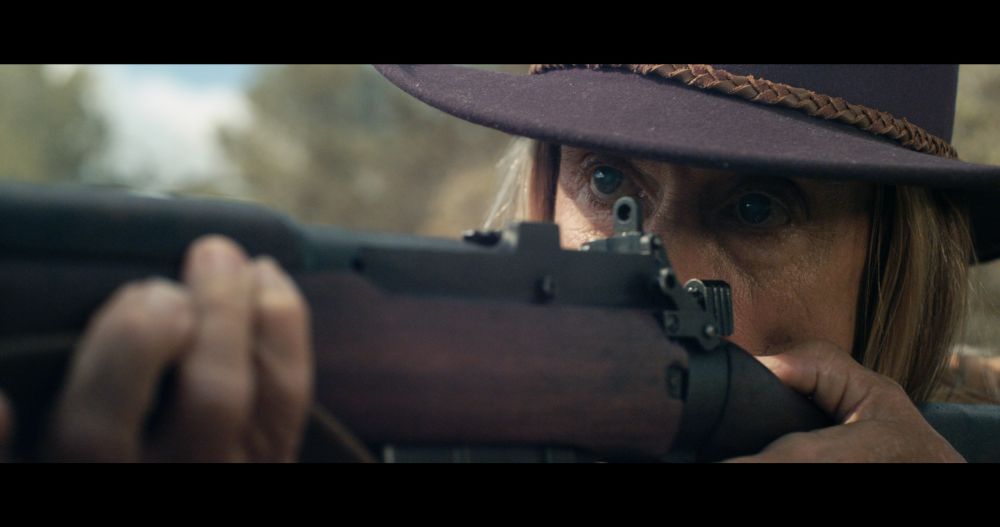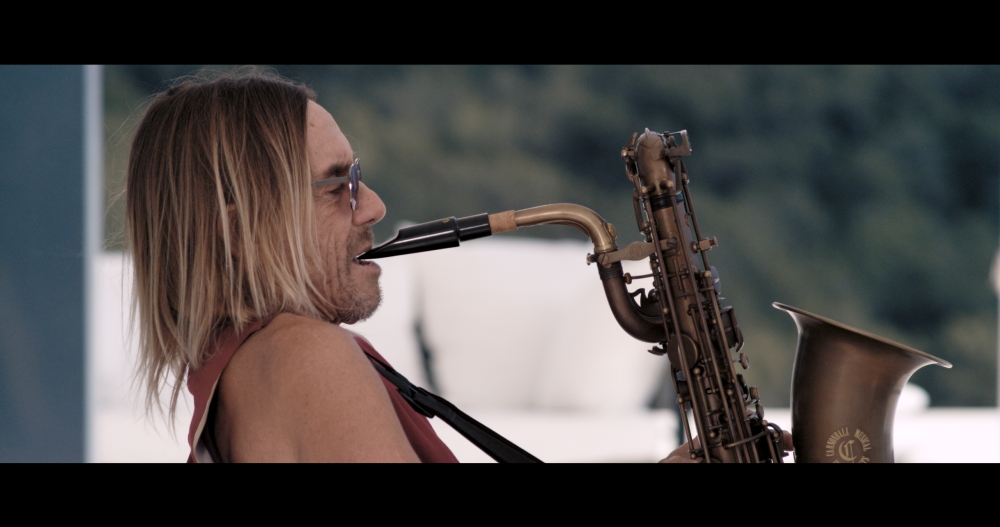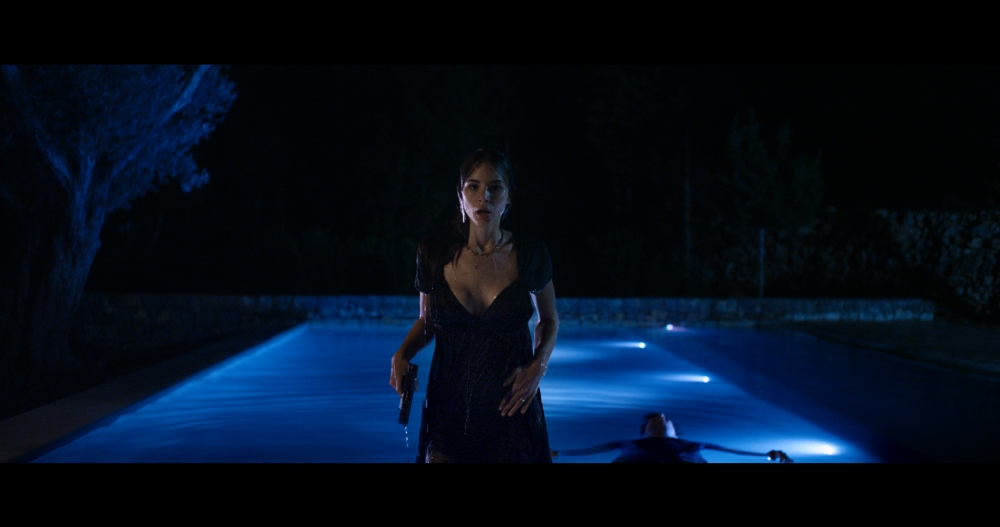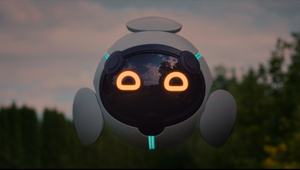
Blinding Iggy Pop – Absolute Go the Extra Mile for Their First Feature Film

In the world of post production, surprises aren’t
surprises – they’re to be expected. And
Blood Orange, Absolute Post’s first feature length VFX job, is no exception to
the rule.
Head of Film Ben Robards shares behind the scenes stories from the shoot, and explains why sixty percent of the job was spent locking eyes with Iggy Pop.
LBB > This is Absolute Post’s first ever feature
film. What’s it about?
Ben > Directed
by Toby Tobias, Blood Orange is a tale of lust and greed. Bill, the film’s lead
played by Iggy Pop, is an ageing rock star living out his days in his luxury
villa along with his beautiful, but promiscuous, young wife. Into this world
enters Lucas, an ex-lover of Isabelle, who is out for revenge. The rest you can
find out next month when the film officially releases...
LBB > How did Absolute first come involved with the
film?
Ben >Toby was
an EP at DLKW Lowe and we’d worked with him on a number of short-form
commercial projects. I knew that he was writing a feature script and he knew
that we were wanting to broaden our horizons, so it was a natural fit.
I asked to take a
look at the script and I immediately knew this was something we wanted to be
involved with.
LBB > Was this a particularly post-heavy job?
Ben > Not at first. After I‘d read the script, Toby came to us to storyboard and discuss the VFX he thought he’d need, and from that point Absolute agreed to come on board. We were expected to provide a little blood here, a little gore there, and some simple ballistics shots. We planned this all out and soon I was flying down to Ibiza, where filming took place, to make sure we shot the right elements. We shot some blue screen and generally composed the shots so we could do a convincing job in post. However, by the time we saw the first edit, the planned 15 – 20 shots had grown to more like 250. And we only had a couple of months to complete the job.
LBB > So Blood Orange went from a pretty simple job
to a rather large one rather quickly. What happened?
Ben > There
were a few hurdles we had to jump during the shoot. For example, we weren’t
allowed to use any red dye for the blood in the pool as we were shooting in a
rented villa. But, of course, we understood that we had to respect the owner’s
wishes, and this wouldn’t be too difficult to add in post, so that was one
thing. There were some sky replacements and landscape clean-ups to do - nothing
untoward. Additionally, the villa had floor-to-ceiling glass windows which,
although visually stunning, did prove to be a difficulty in terms of
reflections, especially shooting on two cameras. In post production we had to
clean up around 100 shots where a camera, boom or crew are reflected in a
window, but again this wasn’t the most difficult task - we painted up stills
and tracked them in, or re-projected cleaned up backgrounds - The nature of
this kind of work is something that Absolute is very used to.
What we weren’t
used to was the sudden change in plan with Iggy and his eyes!

LBB > How did this change come about?
Ben > In
Toby’s script, Iggy’s character is afflicted with cataracts and is partially
sighted, and the original plan was to have Iggy wear some specially made lenses
throughout the film, but we found out just prior to shooting that Iggy couldn’t
wear them. So, as it was integral to the story and couldn’t simply be written
out of the script, we had to digitally create Iggy’s cataracts in post.
Toby did allow him to wear sunglasses for a lot of scenes to limit the number of times the audience would see Iggy’s eyes, but the sunglasses used were semi-transparent and were often back-lit so we still had to rotoscope the sunglasses’ lenses to darken them down on many shots so the audience wouldn’t see Iggy’s normal eyes. As it turned out, the digital cataracts we created accounted for about 60% of the shots.

LBB > How did you decide what Iggy’s eyes should
look like?
Ben > Firstly,
we had to research what kind of cataract Iggy should have. We spoke to an
Ophthalmologist, actually the father of one of our team, who guided our initial
designs away from the diagnostic photographs that we’d found, to a look that
would be authentic in a natural environment. He also steered us away from
cataracts that would imply complete blindness -
We didn’t want Iggy to look totally blind, he needed to be partially
sighted.
In the film,
Bill’s eye-sight is good enough to shoot at rabbits, but bad enough to miss them.
So we settled on a look that clearly told the audience that this man has
cataracts, but wasn’t completely blind.
LBB > Once you had chosen a desired look, how did
you go about creating the eyes in post?
Ben > We had
to first carefully rank the shots in terms of priority. So any close-up shots
of Iggy without his sunglasses were the highest priority and would therefore be
done first.
Once we’d
prioritised the shots, we then had to track Iggy’s head movements in terms of
translations and three-axis rotations, and secondary rotations of his eyeballs.
To expedite this, I developed a system in Flame which derived 3D eyeball
rotation from 2D tracks of his face and eyes.
It was critical that we got the tracking
spot on since we all know that the audience unremittingly focuses their
attention on the lead actor’s eyes – especially an actor who is supposed to be
playing blind. There was no hiding place for us; we had to make it look quietly
but firmly convincing!
Having tracked
his eyes and head movement, we then had to decide what influence the lighting
would have on his pupils, the shadow of his glasses, the brim of his hat and so
on. Being in Ibiza, much of the film is shot in bright sunlight so you’d expect
Iggy’s pupils to be contracted, whereas in the night scenes you would expect
them to be dilated. We therefore not only had to comp in the correctly dilated
pupils, but we also had to consider how a cataract-afflicted pupil would appear
in different lighting - sometimes they will look milky, sometimes darker,
sometimes more reflective and so on.
The entire
process was a balancing act between realism and aesthetic judgement. And
because we had only a few weeks to achieve the look we wanted, and a very small
crew, we had to do everything in Flame and Nuke, rather than relying on a
match-moving department. This kind of ‘indie approach’, married with initiative
and diligence, allowed us to turn the whole film round in just a couple of
months - we’re incredibly proud of that.

LBB > What do you feel you learned from this job?
Ben > There
were challenges to this job, but we quickly learned how to apply our efforts in
the most efficient way possible. Despite specialising in short-form work, we
always knew that Absolute had the capability to take on a much longer VFX-heavy
job like this. We were presented with a challenge, and we conquered it through
balancing efficiency with creativity.
LBB > What’s next for Absolute?
Ben > We’re
already in talks about our next feature projects. It should be said that in
addition to the VFX, we graded the film at Absolute, and the stunning look that
our colourists Adam Clarke and Matt Turner achieved is something that people
have responded really well to, so that’s another route into the long-form work
that we’re pursuing.
Blood Orange officially releases today and there’s a host of London screenings on June 20th: https://www.ourscreen.com/film/Blood-Orange
View exclusive behind the scenes photos below:













